The modern bow:
Modern archery originated in England in the 14th century and evolved into a competitive sport in the 16th century. 1673 saw the formation of the Royal Archery Association (RAA), the first professional archery organisation in the world and the first to admit women as members.
In 1900, archery was made an official event at the 2nd Olympic Games and was one of the 20 official events of that year. This was followed by the 3rd Olympic Games in St Louis, USA in 1904, the 4th Olympic Games in London, England in 1908 and the 7th Olympic Games in Antwerp, Belgium in 1920.
After the 7th Olympic Games, archery was absent from the Olympic Games for 52 years due to the lack of uniform rules for the event and the fact that each party had its own views on the rules.
In 1931, the International Archery Federation (FITA, short for Fédération Internationale de Tir à l'Arc in French, renamed World Archery in 2011) was founded in Poland and the first Archery World Championships were held. Under the wise leadership of Ms. Inge Brice. Under the wise leadership of Ms. Brice, the FIA worked tirelessly over the years and in 1972, at the Munich Olympic Games, archery was reintroduced as an official Olympic sport until now.
Women's archery was introduced to the Olympic Games in 1904 and was one of the first sports in the history of the Games to allow women to compete.
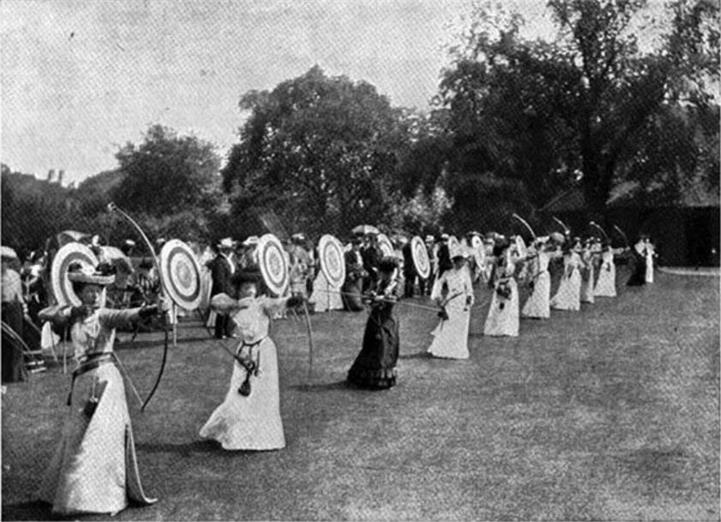
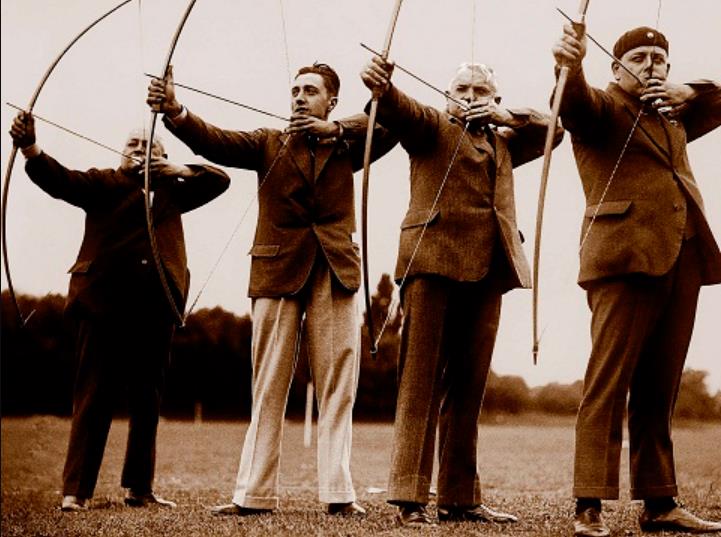
The bows used in early archery competitions were not much different from the traditional monolithic longbows, with single or multi-ply pressed wood bodies, possibly angular string slots at the ends, straight up and down bow handles, no bow windows or arrow rests, no optimized shape for the "pushing" action, and a wide variety of archery positions.
In 1933, Fred Bear founded the Bear Archery Company, and the traditional longbow began to change dramatically. 1946, Bear Archery filed a patent application with the U.S. Patent Office for a "glass fiber reinforced bow". Mr. Bear was able to obtain a new type of fiberglass sheet with a more optimized structure and an optimized gluing process, which solved the problem of debonding the wood from the fiberglass sheet.
In 1950, he filed patent applications for a new "synthetic laminated bow" and a "new soft bow tip". By now, glass fiber material was not only described as "reinforcing material", but also called "elastic material" or "energy storage material", and for the first time, mankind was free from the over-reliance on natural materials in the making of bows. For the first time, mankind was able to break away from its over-reliance on natural materials in bow making. Since then, neatly cut maple wood limbs could be used as the core material of bows, and bows and arrows finally evolved from handmade products to qualified industrial products. In addition, the material of the soft tip is the same as the rest of the bow arm, which not only simplifies the production process, but also increases the length of the bow arm due to the deformation of the tip itself, which allows a larger area to participate in deformation energy storage and further improves the bow's pull and performance. As shown in the picture below.
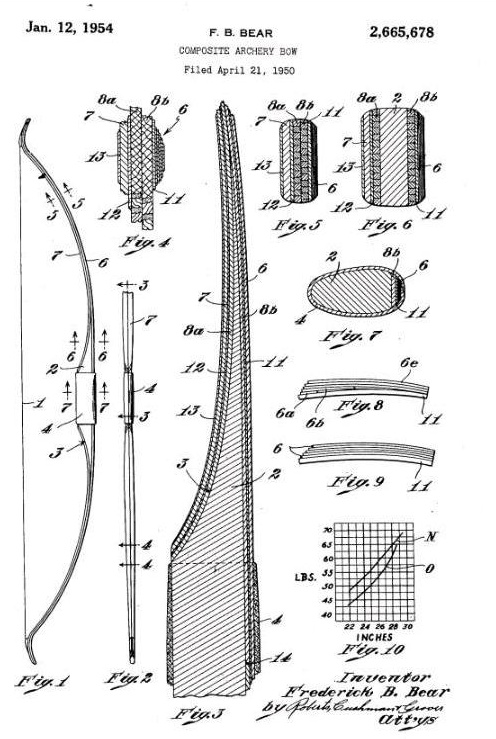
In 1956, Mr. Earl Hoyt applied for a patent to make archery more in line with "straight line force", that is, a "push handle" which is more in line with the shape of the hand. This "pusher" allows the archer's pusher to obtain a more stable state, which is helpful for hitting accuracy.
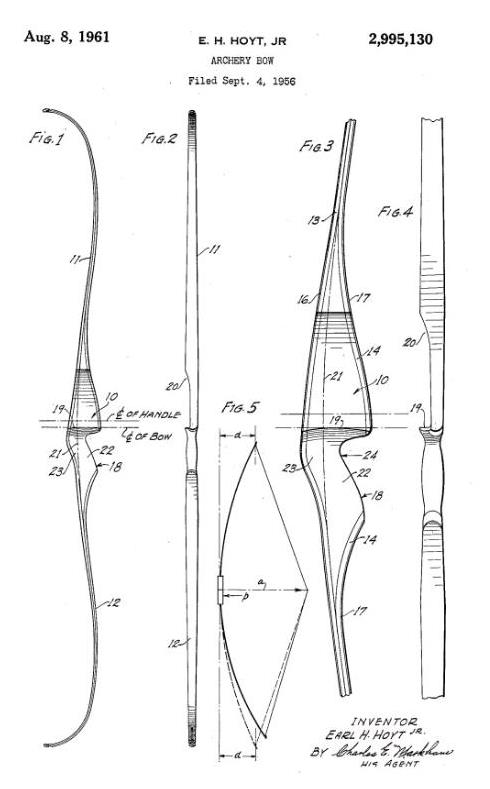
In order to improve the hitting accuracy and to solve the problem that arrows are no longer disturbed by the bow handle too much when firing, the invention of the bow window ( aiming window / sight ) is also a logical step. There are many different opinions on the invention date of the bow window, but there are three people who are available: Mr. W.H. Wright and Mr. G.L. Thorne invented it around 1897; Mr. C.J. Cameron invented it around 1931 and Mr. J.O. Lowell invented it around 1940.
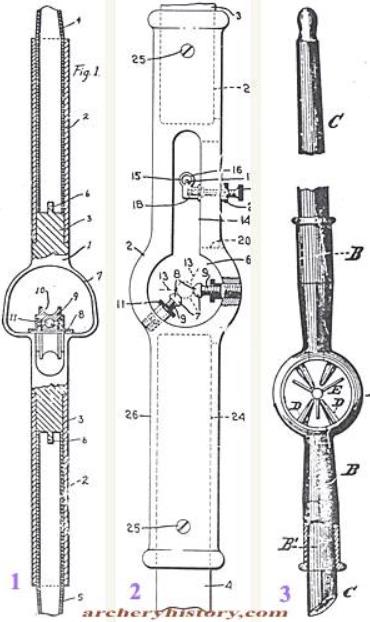
As you can see from the patent certificates of those years, with the flexible tip of the recurve, the large view window and the ergonomic grip, the truly modern recurve bow was born.
Around the 1960's, the technology of three-part bow matured, and the bow could be disassembled into three parts very easily, which made it more convenient for people to carry the bow. As the lamination process became more sophisticated, more extreme and exotic bow shapes could be produced, such as the black swan archery bow.

Eventually, with the advent of lightweight metal grips and a wide variety of accessories, the modern recurve bow finally became what we know it to be today.
The recurve bow is the best modern technology that has evolved from the traditional bow. The name "recurve bow" comes from the fact that there is a reverse elastic bend at the end of the bow arm, and this elastic reverse bend can greatly improve the rebound efficiency of the bow arm, thus increasing the speed of the arrow. Unlike traditional bows with rigid reverse warp, this elastic reverse bend is involved in doing work in modern recurve bows, while traditional bows with rigid reverse warp are not involved in doing work. Lightweight, solid, large-view recessed bow grip, ergonomic grip, flexible limb made of high-tech materials, and tough string made of polymer, all combine to make a very good high-performance launcher.
Many basic recurve bows, especially the popular North American hunting recurve bows, are made of wood with a polished and lacquered surface, and the wood used to make the handle is diverse, with different colors and unique patterns. The bow is made of multiple layers of glass fiber and wood, so the tension energy can be evenly distributed to each layer of the material, and the area involved in deformation energy storage is very large. In the picture below, photo A is a "one-piece recurve bow" and photo B is another more common "take-down recurve bow". This type of recurve bow can be easily disassembled and is very convenient to carry, as it has a slot or positioning point at the top and bottom of the handle that can be supplemented by a bolt to hold the limb in place. Split recurve bows are mainly used for competitive shooting, the handle is made of mostly aluminum or carbon fiber, and the bow limb is generally molded in composite material, the bow limb is independently interchangeable, the same handle can be changed to a slightly stronger or lighter limb.
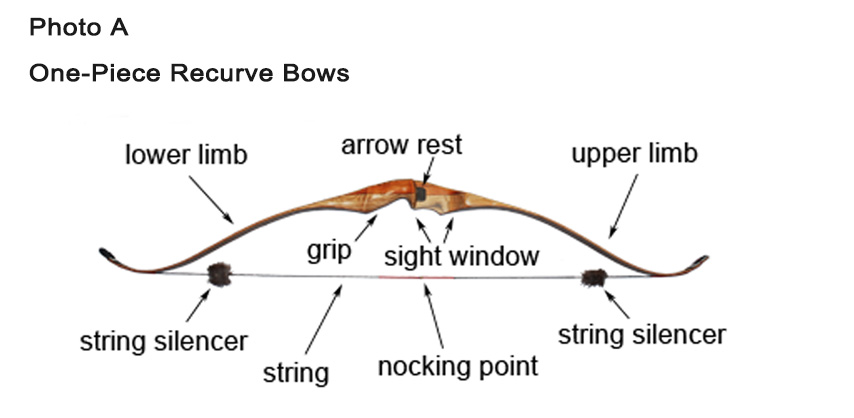
If you are still not familiar with recurve bows, the following diagram can help you understand and know modern recurve bows more deeply.
Contact: Kelly yin
Phone: 15918632152
Tel: 0752-6920238
Email: [email protected]
Add: No.4 Lianxing Road,Shiwan Town,Boluo County,Huizhou Guangdong,China 516127
We chat
